FS2004 Weather 3
FS2004 Weather3 - 39 weather themes for FS2004. A complete revision of the previous releases; 15 new themes have been added. File sizes have been greatly reduced. By Adrian Shortall.39 WEATHER THEMES FOR FS2004This pack contains a complete revision of the 2 earlier theme releases (weather1.zip & ...
- Download hits
- 7.1K
- Compatibility
- FS2004
- Filename
- weather3.zip
- File size
- 1.82 MB
- Virus Scan
- Scanned 18 days ago (clean)
- Access to file
- Free (Freeware)
- Content Rating
- Everyone
39 WEATHER THEMES FOR FS2004
This pack contains a complete revision of the 2 earlier theme releases (weather1.zip & weather2.zip), plus 11 new winter themes, and 3 new miscellaneous themes. This revision has greatly reduced the individual and total file sizes.
OVERVIEW:
The weather themes in this pack are suitable for VFR & IFR simming within FS2004.
TO INSTALL:
1. If you are installing these themes for the first time:
Move or copy all files from the 'Weather' folder to your FS2004WeatherThemes folder. That's all. The themes will then be available from the menu in World--Weather.
2. If you have one or both of the previous releases:
You might care to archive the previous versions, in the event you prefer some of those to the current release. However, I doubt that you'll find any of the older versions better than the new.
Overwrite the old files with this release in your FS2004WeatherThemes folder. You will notice a marked reduction in total file size.
Deletion: I've deleted the earlier themes 'Cirrostratus' and 'Ice Aloft' from the package.
TO ACTIVATE:
From the World menu, choose Weather, and select a theme from the list provided.
TO UNINSTALL:
Each theme consists of 3 files: a .wt file, a .WTB file, & a .bmp file. If you dislike a theme and wish to delete it, simply open your FS2004WeatherThemes folder and remove the 3 files associated with it.
For handy reference, you might wish to print this document.
LIMITATIONS:
Although FSim has made significant advances in recent years, many major improvements remain to be realised. These include the weather engine, ATC, mesh accuracy and landclass fidelity. Some limitations will likely remain endemic. For example, although airport elevations in the sim are mostly accurate, low-level mesh data often puts airports in deep holes, and the colossal file sizes of accurate mesh data practically preclude much improvement in this department. In the weather department, we still lack volumetric clouds, ATIS accuracy, an accurate portrayal of weather theme data, realistic virga, realistic thunderstorm depiction, etc. The weather themes in this pack are subject to these limitations.
DISCUSSION:
Some of the themes produce weather not immediately apparent, but encountered in flight. Others resemble Microsoft's default set, with conditions globalised and more or less apparent from the outset. Also, refer to the notes on 'RAM data retention' below.
In the following descriptions, I have suggested the appropriate season for each theme, the possible flight rules (IFR or VFR), and my estimate of each theme's Degree of Difficulty (DOD), ranging from 1, easy, to 10, very difficult. You should set the appropriate season in the FS9 menu choice--Time & Season. The difficulty level will be especially relevant for simmers who use addon-programs that penalise flight errors.
THE THEMES:
1. Altocumulus. Cumulus cloud to 5 oktas with a bilayered effect, light winds and high visibility. The display is especially spectacular around dawn & dusk. Lower level cloud will be to ground over high terrain. VFR flight in clear sky can be conducted below/between/above the layers. Late spring, summer, early autumn. DOD: 1.
2. Altostratus. Heavy stratus to 7 oktas, base around FL210, tops around FL390. Visibility around 50km, decaying with altitude increase. Light scattered showers. VFR best at lower altitudes. Wind N-W, 10-25kts. DOD: 2.
3. Charlie Bravos Ahead. Features scattered thunderstorms at mid-altitudes, encountered around 40nm from your departure point. CAUTION: The realistic temperature decrease with altitude means that icing is probable in rain above the freezing level. If your aircraft is not equipped with anti-icing, avoid such flight, or detour around the storm cells. There should also be minor barometric fluctuations in stormy regions. Summer. IFR or VFR. DOD: 6-8.
4. Cirrocumulus. High altitude cloud to around FL450, with unlimited visibility, perfect VFR conditions. Wind westerly, 10-20kts. Late spring, summer, early autumn. DOD: 1.
5. Cirrus Days. High cirrus cloud & light southerly winds make for pleasant VFR flight weather. Late spring, summer, early autumn. DOD: 1.
6-9. Fair Easterly, etc. These 4 themes provide a choice of winds (tail or otherwise) to 25kts from the main compass directions, with good flight conditions. Useful for short- to medium-haul flights. Late spring, summer, early autumn. IFR or VFR. DOD: 1.
10-13. High Winds E-W, etc. These 4 themes provide a choice of very strong high-altitude winds (tail or otherwise) to 70kts from the main compass directions. Especially useful for transcontinental, transoceanic & other long-haul flights. The winds increase in velocity with altitude, maxing at around FL350. Turbulence also increases with altitude & wind velocity, but remains fairly mild. Cumulus to 4 oktas and high cirrus accompany the winds. Late spring, summer, early autumn. IFR or VFR. DOD: 2.
14. Hot Tropical Day. Mainly for equatorial & sub-equatorial regions, with an apron temp. of 35*C. Winds light southerly. High humidity decreases visibility somewhat, and piston, non-turbocharged aircraft suffer some performance loss. Summer. IFR or VFR. DOD: 3.
15. Light Summer Rain. Few problems here, with light rain from high cloud in otherwise clear skies. Light easterly winds. IFR or IFR. Summer. DOD: 2.
16. Low Pressure System. A dramatic theme with traps for unwary high-altitude flyers, especially if IFR. The weather is very variable, with sheering winds, scattered showers and variable visibility. The old adage remains true: "From high to low, look out below." The altimeter rule is: Wind-on pressure, wind-on height; wind-off pressure, wind-off height. (Hint: the sim's transition level is FL180). Late spring, summer, early autumn. IFR & hazardous VFR. DOD: 8-10.
17. Mean Cold Front. A cold front confined to a band around 50nm wide (you can fly through it). Winds variable southerly. IFR or hazardous VFR. Summer. DOD: 6.
18. Nimbostratus. Heavy widespread rain and moderate turbulence, with icing probable above the freezing level, and visibility often greatly reduced. Instrument approaches required at most airports. Late spring, summer, early autumn. IFR only. DOD: 8-10.
19. Precison Approach. A more severe variation of 'Solid IMC', described below. Here, ground visibility is down to 1nm (approx. 1.6km). Precison instrument approaches are required at all airports equipped with them. Winds are northerly L/V. Early spring & autumn. DOD: 10
20. Scud Runner. A band of low dense stratus accompanied by rain showers forms along your track, inviting low or high flight to avoid it. Winds are mostly southerly. Summer. IFR or hazardous VFR. DOD: 4.
21. Severe Cold Front. A global front (you can't fly through it) producing testing flight conditions. The dramatic temperature drop in the front is conducive to aircraft icing. Winds are mostly southerly, with dense low & high-altitude cloud. IFR or hazardous VFR. Summer. DOD: 7-10.
22. Solid IMC. Solid foggy weather with light northerly winds for practising your IFR departures & arrivals. Ground visibility is down to 10nm (approx. 16km). Suitable for non-precision Instrument approaches at most airports. Early spring & autumn. DOD: 8-10.
23. Southerly Buster. Nasty sheer and turbulence here in a band around 40nm wide, primarily a problem if you have to land within it. Summer. IFR or VFR. DOD: 6.
24. Squall. This theme features testing weather that has settled over a trough, approximately 80nm wide, around 30nm into your flight. Low stratus and heavy cumulus both produce heavy showers, without icing. Winds are swinging southerlies to 45 knots, with gusts to 25 knots. Weather beyond the trough is fairly settled, though with minor barometric fluctuations requiring frequent altimeter attention. Summer. IFR or hazardous VFR. DOD: 5-8.
25. Summer in Dubai. A theme for hot, dry regions, especially deserts in summer. Apron temp. is 45*C; wind is light & variable; visibility unlimited. Expect some performance loss due to the conditions. IFR or VFR. DOD: 2
26. The Unexpected. Extremely variable weather offers challenges for novices and experts alike. Arrivals after long-distance flights can be very testing. Summer. DOD: regionally dependent, 6-10.
27. Virga. Light rain and variable cumulus cloud, with winds swinging from south to west. No icing evident. Summer. IFR or VFR. DOD: 3.
28. Winter Cold Front. Departing in fine weather, you encounter a strong cold front with reported severe icing in snow. Winds are variable northerly, with turbulence in the front. You should see cumulus cloud (warm air) pushed high above stratus (cold frontal air). Cb cells are embedded. IFR and hazardous VFR. Winter. DOD: 10.
29-32. Winter Easterly, etc. 4 wind-defined themes suitable for regions subject to snow and zero ground temperature. Expect icing above 6000' AGL. Winds around 25 knots above 3000' AGL, with occasional marked directional shifts. IFR or hazardous VFR. Winter. DOD: 10.
33-36. Winter No Ice Easterly, etc. As above, but without icing. Winter. IFR or VFR. DOD: 6.
37. Winter Landscape. Mostly clear conditions, minor snowfalls, light winds, nil icing and high visibility make for pleasant flights, especially over mountainous terrain, such as the Himalayas, European Alps, US Coastal range, US Rockies, and the Andes. IFR or VFR. DOD: 2.
38. Winter Low Pressure. A significant low pressure system has moved into your region. Expect flight conditions typical of such systems, including some wild pressure (altimeter) transitions and wind-direction shifts. Winter. IFR or hazardous VFR. DOD: 8-10.
39. Winter Nimbostratus. Heavy rain, moderate turbulence, low visibility and probable icing. IFR only, with precision approaches often required. DOD: 10.
WEATHER ISSUES
1. ICING
FS9 simulates 2 kinds of icing: pitot freezing and airframe ice. The effects can be dramatic (and lethal!).
A. Pitot tube icing instantly produces a loss of indicated airspeed (IAS). If throttle/power is coupled to the autopilot/flight director, there is an immediate turbine/engine surge because of the apparent zero IAS, and V(N) can rapidly be exceeded. Unless hearing-impaired, you should hear the resulting surge.
The fix involves preventative and immediate actions.
Prevention:
(1) Never fly in known or possible icing conditions if your aircraft is not equipped with pitot-heat and anti-icing;
(2) Study the weather forecast (or theme) prior to flight, and visualise the probable impending conditions;
(3) IMPERATIVE: Know your aircraft's throttle/power settings to produce a required IAS at takeoff, in cruise, and on approach to landing;
(4) Consistently monitor the outside air temperature (OAT) and weather, especially for signs of precipitation at or above the freezing level; and
(5) Consistantly scan the panel, to detect the zero IAS.
Immediate action:
Uncouple speed control from the autopilot/flight director, and reset the power % or rpm to the desired level. Thereafter, 'hand-fly' the aircraft until you are into non-icing conditions. Assuming the aircraft is not iced, the altitude hold, etc, is not affected by icing conditions. Never trust a 'returned IAS' unless you are in non-icing conditions--the pitot often re-freezes. The IAS loss is especially problematic in the landing phase. Here, your GPS can be invaluable. A few glances at it will reveal your ground speed. This, combined with an allowance for wind speed and direction, gives a fairly accurate indication of airspeed. Similarly, if your aircraft lacks one, a windspeed/direction indicator (an addon available at major sim websites) is a valuable instrument in these circumstances.
B. Airframe icing produces a gradual decrease in airspeed (indicated or not) and a rise in aircraft pitch, both towards the stall. At the stall, your aircraft's response will depend upon its forward or aft COG. I fly the Stratojet Excalibur, which has its engines (and COG) far aft, and controls pitch via (nose) canards. At the iced-stall it pitches up, loses all pitch control, sinks aftwards, and no amount of power can undo the stall.
2. ATIS AND THE THEMES
The departure & arrival ATIS often bear no resemblance to the current weather theme, regardless of how long the theme has been active. For example, after a 500nm flight you will arrive to find the ATIS declaring "No cloud beneath 20,000 feet; visibility 20nm," when the airport is obscured by heavy rain from thunderstorms. This appears to be a bug or sim anomaly. Similarly, the active runway is often contrary to the prevailing wind, and you might be compelled to land with a 20-30 knots tailwind. This is especially the case when AI aircraft are using the airport. Evidently, the sim's ATC cannot divert AI aircraft from an assigned runway, which remains active regardless of changed weather conditions. As far as I can figure it--and feel free to comment on this--there appears to be a 128nm 'active runway radius'. Any AI aircraft within the circle defined by this radius keep the assigned runway active, so that, at busy airports, it never changes, regardless of changed weather. You can test this for yourself. The longest I've waited for a runway change due to changed wind direction at a busy airport is 3 hours . . . but in vain.
3. LAPSE RATE, DEWPOINT & CLOUD
From my observations, in most situations the sim uses the Standard Atmospheric Lapse Rate (SALR) of around 2*C per 1000' change in altitude--cooling on altitude increase, warming on decrease. Cloud more or less appears at the dewpoint set in the theme, not automatically at 0*C. The sim radically alters the lapse rate according to the surface pressure setting, and sets clouds far beyond parameters set in the theme.
4. SITUATIONAL AWARENESS
Situational awareness applies in all themes, just as it does in real-world flight. For example, cloud 5000' AGL at a coastal resort could be cloud-on-ground at high-altitude airports.
SUNDRIES
PRESENTATION. Since clouds feature in most of the themes, you might need to experiment with weather settings to obtain the best FPS. A high setting for cloud density is especially hard on the frame rate, whereas a high value for sight-distance appears to be much less so.
The weather change-rate (in Options/Settings/Weather) is a matter of personal preference. However, the MILD setting somewhat diminishes effects set in themes, whilst VERY HIGH produces abrupt, unrealistic transitions. That said, regardless of the setting, FS9 still has trouble smoothing transitions between weather regions (grids 16km x 16km), especially where dramatically different conditions prevail. Hence, experiment with the various change rates and find one to your liking.
RAM DATA RETENTION. FS9 is notorious for refusing to RAM-dump, even after closing. This causes data from (1) a current weather theme or (2) a saved situation including its weather, to be retained in the next chosen theme. Apart from making scenery designs and weather themes very difficult to flight-test and debug, this causes several anomalies. (1) The weather becomes infuriatingly unpredictable. (2) If you are flying IFR, any variant altimeter settings will cause ATC to zap you with the dreaded "above/below your assigned altitude." Tapping the <B> key fixes this. (3) It produces weird situations. For example, an airport set to IFR minima in a theme will suddenly appear in brilliant sunshine, with ATC denying landing permission to VFR aircraft! I've not found a fix for this problem, which also occurs if you choose and set 'User Defined Weather.' However, during longer flights ( >200nm ), the sim usually restores the chosen theme, though the arrival ATIS typically remains bizarre.
HIGHLY RECOMMENDED:
1. "Xtreme Real Life Lightning 2 FS2004" by Sim Aero Pilot 2004, obtainable from the major FSim websites. Derived from actual lightning strikes, the textures are far superior to the default ones, with dramatic effects in cumulonimbus conditions. The near-aircraft strikes are astonishing.
2. High framerate cloud textures. Several packs are available from the major FSim websites, by authors including Bart Dylkiewicz, Gerrit Kranenbarg and the FSW GROUP.
I hope you enjoy these themes.
Adrian Shortall.

The archive weather3.zip has 124 files and directories contained within it.
File Contents
This list displays the first 500 files in the package. If the package has more, you will need to download it to view them.
| Filename/Directory | File Date | File Size |
|---|---|---|
| Weather 3.txt | 11.14.05 | 16.87 kB |
| FILE_ID.DIZ | 11.14.05 | 205 B |
| Weather3.doc | 11.14.05 | 18.20 kB |
| weather themes | 11.14.05 | 0 B |
| Altocumulus.bmp | 12.14.04 | 91.83 kB |
| Altocumulus.wt | 07.28.05 | 246 B |
| Altocumulus.WTB | 07.28.05 | 16.59 kB |
| Altostratus.bmp | 12.31.04 | 91.83 kB |
| Altostratus.wt | 07.30.05 | 203 B |
| Altostratus.WTB | 07.30.05 | 16.59 kB |
| Cbs_Ahead.bmp | 06.04.04 | 91.83 kB |
| Cbs_ahead.wt | 08.07.05 | 241 B |
| Cbs_ahead.WTB | 08.07.05 | 147.84 kB |
| Cirrocumulus.bmp | 12.16.04 | 91.83 kB |
| Cirrocumulus.wt | 07.29.05 | 166 B |
| Cirrocumulus.WTB | 07.29.05 | 20.93 kB |
| Cirrus Days.bmp | 06.09.04 | 91.83 kB |
| Cirrus Days.wt | 07.28.05 | 136 B |
| Cirrus Days.WTB | 07.28.05 | 20.93 kB |
| Fair Easterly.bmp | 12.31.04 | 91.83 kB |
| Fair Easterly.wt | 07.29.05 | 168 B |
| Fair Easterly.WTB | 07.29.05 | 16.59 kB |
| Fair Northerly.bmp | 12.08.04 | 91.83 kB |
| Fair Northerly.wt | 07.29.05 | 171 B |
| Fair Northerly.WTB | 07.29.05 | 16.59 kB |
| Fair Southerly.bmp | 12.31.04 | 91.83 kB |
| Fair Southerly.wt | 07.29.05 | 171 B |
| Fair Southerly.WTB | 07.29.05 | 16.59 kB |
| Fair Westerly.bmp | 12.31.04 | 91.83 kB |
| Fair Westerly.wt | 07.29.05 | 168 B |
| Fair Westerly.WTB | 07.29.05 | 16.59 kB |
| High Winds E-W.bmp | 12.31.04 | 91.83 kB |
| High Winds E-W.wt | 07.29.05 | 233 B |
| High Winds E-W.WTB | 07.29.05 | 20.93 kB |
| High Winds N-S.bmp | 12.31.04 | 91.83 kB |
| High Winds N-S.wt | 07.29.05 | 236 B |
| High Winds N-S.WTB | 07.29.05 | 20.93 kB |
| High Winds S-N.bmp | 12.31.04 | 91.83 kB |
| High Winds S-N.wt | 07.29.05 | 235 B |
| High Winds S-N.WTB | 07.29.05 | 20.93 kB |
| High Winds W-E.bmp | 12.31.04 | 91.83 kB |
| High Winds W-E.wt | 07.29.05 | 233 B |
| High Winds W-E.WTB | 07.29.05 | 20.93 kB |
| Hot Tropical Day.bmp | 07.07.05 | 91.83 kB |
| Hot Tropical Day.wt | 07.29.05 | 130 B |
| Hot Tropical Day.WTB | 07.29.05 | 22.12 kB |
| Light Summer Rain.bmp | 07.20.05 | 91.83 kB |
| Light Summer Rain.wt | 07.29.05 | 141 B |
| Light Summer Rain.WTB | 07.29.05 | 20.93 kB |
| Low Pressure System.bmp | 12.11.04 | 91.83 kB |
| Low Pressure System.wt | 08.07.05 | 202 B |
| Low Pressure System.WTB | 08.07.05 | 235.83 kB |
| Meanfrnt.bmp | 06.05.04 | 91.83 kB |
| Meanfrnt.wt | 08.10.05 | 152 B |
| Meanfrnt.WTB | 08.10.05 | 145.48 kB |
| Nimbostratus.bmp | 12.31.04 | 91.83 kB |
| Nimbostratus.wt | 08.16.05 | 298 B |
| Nimbostratus.WTB | 08.16.05 | 18.96 kB |
| Precision Approach.bmp | 08.29.05 | 91.83 kB |
| Precision Approach.wt | 09.02.05 | 190 B |
| Precision Approach.WTB | 09.02.05 | 2.81 kB |
| Scud Runner.bmp | 06.09.04 | 91.83 kB |
| Scud Runner.wt | 07.29.05 | 154 B |
| Scud Runner.WTB | 07.29.05 | 182.26 kB |
| Severe Cold Front.bmp | 05.01.05 | 91.83 kB |
| Severe Cold Front.wt | 08.10.05 | 126 B |
| Severe Cold Front.WTB | 08.10.05 | 96.06 kB |
| Solid_IMC.bmp | 06.06.04 | 91.83 kB |
| Solid_IMC.wt | 08.07.05 | 153 B |
| Solid_IMC.WTB | 08.07.05 | 16.59 kB |
| Squall.bmp | 06.09.04 | 91.83 kB |
| Squall.wt | 08.23.05 | 219 B |
| Squall.WTB | 08.23.05 | 83.04 kB |
| Sthbust.bmp | 06.05.04 | 91.83 kB |
| Sthbust.wt | 09.28.05 | 175 B |
| Sthbust.WTB | 09.28.05 | 54.85 kB |
| Summer in Dubai.bmp | 09.18.05 | 91.83 kB |
| Summer in Dubai.wt | 09.18.05 | 196 B |
| Summer in Dubai.WTB | 09.18.05 | 2.81 kB |
| The Unexpected.bmp | 01.03.05 | 91.83 kB |
| The Unexpected.wt | 08.06.05 | 212 B |
| The Unexpected.WTB | 08.06.05 | 212.81 kB |
| Winter Cold Front.bmp | 04.11.05 | 91.83 kB |
| Winter Cold Front.wt | 08.07.05 | 158 B |
| Winter Cold Front.WTB | 08.07.05 | 100.27 kB |
| Winter Easterly.bmp | 02.05.05 | 91.83 kB |
| Winter Easterly.wt | 08.15.05 | 232 B |
| Winter Easterly.WTB | 08.15.05 | 20.93 kB |
| Winter Landscape.bmp | 02.05.05 | 91.83 kB |
| Winter Landscape.wt | 11.06.05 | 192 B |
| Winter Landscape.WTB | 11.06.05 | 2.81 kB |
| Winter Low Pressure.bmp | 02.10.05 | 91.83 kB |
| Winter Low Pressure.wt | 08.11.05 | 203 B |
| Winter Low Pressure.WTB | 08.11.05 | 100.27 kB |
| Winter Nimbostratus.bmp | 04.11.05 | 91.83 kB |
| Winter Nimbostratus.wt | 08.16.05 | 305 B |
| Winter Nimbostratus.WTB | 08.16.05 | 18.96 kB |
| Winter No Ice Easterly.bmp | 02.26.05 | 91.83 kB |
| Winter No Ice Easterly.wt | 08.15.05 | 243 B |
| Winter No Ice Easterly.WTB | 08.15.05 | 20.93 kB |
| Winter No Ice Northerly.bmp | 03.24.05 | 91.83 kB |
| Winter No Ice Northerly.wt | 08.15.05 | 244 B |
| Winter No Ice Northerly.WTB | 08.15.05 | 20.93 kB |
| Winter No Ice Southerly.bmp | 03.24.05 | 91.83 kB |
| Winter No Ice Southerly.wt | 08.15.05 | 244 B |
| Winter No Ice Southerly.WTB | 08.15.05 | 20.93 kB |
| Winter No Ice Westerly.bmp | 02.26.05 | 91.83 kB |
| Winter No Ice Westerly.wt | 08.15.05 | 237 B |
| Winter No Ice Westerly.WTB | 08.15.05 | 20.93 kB |
| Winter Northerly.bmp | 02.06.05 | 91.83 kB |
| Winter Northerly.wt | 08.15.05 | 233 B |
| Winter Northerly.WTB | 08.15.05 | 20.93 kB |
| Winter Southerly.bmp | 04.13.05 | 91.83 kB |
| Winter Southerly.wt | 08.15.05 | 233 B |
| Winter Southerly.WTB | 08.15.05 | 20.93 kB |
| Winter Westerly.bmp | 02.05.05 | 91.83 kB |
| Winter Westerly.wt | 08.15.05 | 230 B |
| Winter Westerly.WTB | 08.15.05 | 20.93 kB |
| Virga.bmp | 06.09.04 | 91.83 kB |
| Virga.wt | 08.06.05 | 114 B |
| Virga.WTB | 08.06.05 | 16.59 kB |
| WEATHER3 | 10.28.05 | 0 B |
| flyawaysimulation.txt | 10.29.13 | 959 B |
| Go to Fly Away Simulation.url | 01.22.16 | 52 B |
Installation Instructions
Most of the freeware add-on aircraft and scenery packages in our file library come with easy installation instructions which you can read above in the file description. For further installation help, please see our Flight School for our full range of tutorials or view the README file contained within the download. If in doubt, you may also ask a question or view existing answers in our dedicated Q&A forum.

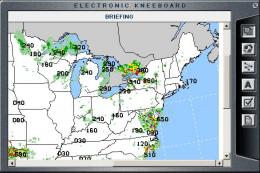

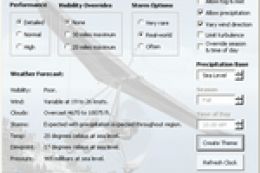
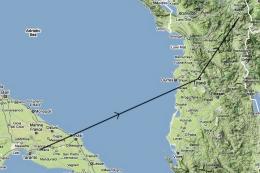
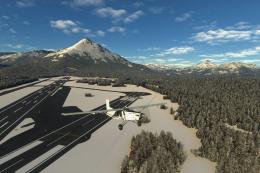
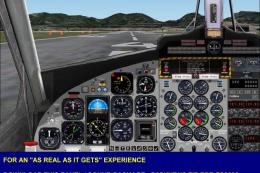
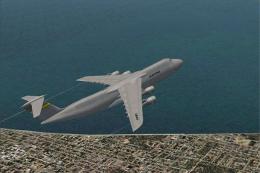
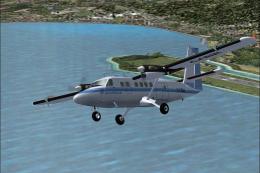
0 comments
Leave a Response